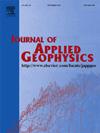Integrated 2D time-lapse resistivity tomography and spontaneous potential surveys demonstrate seasonal, use-related patterns of seepage from a water-supply canal system
IF 2.2
3区 地球科学
Q2 GEOSCIENCES, MULTIDISCIPLINARY
引用次数: 0
Abstract
The imperative of ensuring structural integrity and maintaining operational safety of hydraulic structures while managing surface water for power generation, food and fiber production, groundwater storage, and preservation of the natural environment drives a worldwide need for locating seepage associated with such structures. This paper is a case study of the geophysical assessment of seepage from the Sutherland Supply Canal and the connecting Paxton Siphon Inlet in subhumid to semiarid western Nebraska, USA. We employed 2D electrical resistivity tomography and self-potential methods to identify and characterize numerous potential seepage zones beneath these structures under both full-canal conditions (August 2023) and subsequent empty-canal conditions (October 2023). Our time-lapse analysis of the two 2D resistivity data sets exhibited a relative increase in the resistivity ratio of the potential seepage zones under empty-canal conditions of up to 700 (i.e., seven times of the magnitude of the resistivity determined in August) and a desaturation of about 26 % relative to saturation under full-canal conditions. These results indicate that a hydraulic connection exists between the canal and the potential seepage zones under it. Furthermore, self-potential data outlined the recharge and discharge zones under the canal according to positive and negative polarity of the drift-referred to base self-potential data. Our integrated time-lapse approach is non-invasive, time- and cost-effective, and easily repeatable; therefore, it is applicable to the assessment of seepage in irrigation canals, siphons, and dams worldwide.
在管理地表水用于发电、粮食和纤维生产、储存地下水以及保护自然环境的同时,必须确保水力结构的完整性并维护其运行安全,这就促使全世界都需要对与此类结构相关的渗流进行定位。本文是对美国内布拉斯加州西部亚湿润到半干旱地区萨瑟兰补给运河和相连的帕克斯顿虹吸进水口渗流进行地球物理评估的案例研究。我们采用二维电阻率层析成像和自电位方法,在满运河条件下(2023 年 8 月)和随后的空运河条件下(2023 年 10 月),确定并描述了这些结构下方的众多潜在渗流区。我们对两组二维电阻率数据进行的延时分析表明,在空运河条件下,潜在渗流区的电阻率比值相对增加高达 700(即是 8 月份测定的电阻率比值的七倍),相对于全运河条件下的饱和度,脱饱和度约为 26%。这些结果表明,运河与其下的潜在渗流区之间存在水力联系。此外,自电位数据根据漂流物的正负极性(即基础自电位数据)勾勒出了运河下的补给区和排泄区。我们的综合延时方法具有非侵入性、省时、成本效益高和易于重复等特点,因此适用于全球灌溉渠道、倒虹吸管和水坝的渗流评估。
本文章由计算机程序翻译,如有差异,请以英文原文为准。
求助全文
约1分钟内获得全文
求助全文
来源期刊

Journal of Applied Geophysics
地学-地球科学综合
CiteScore
3.60
自引率
10.00%
发文量
274
审稿时长
4 months
期刊介绍:
The Journal of Applied Geophysics with its key objective of responding to pertinent and timely needs, places particular emphasis on methodological developments and innovative applications of geophysical techniques for addressing environmental, engineering, and hydrological problems. Related topical research in exploration geophysics and in soil and rock physics is also covered by the Journal of Applied Geophysics.
 求助内容:
求助内容: 应助结果提醒方式:
应助结果提醒方式:


